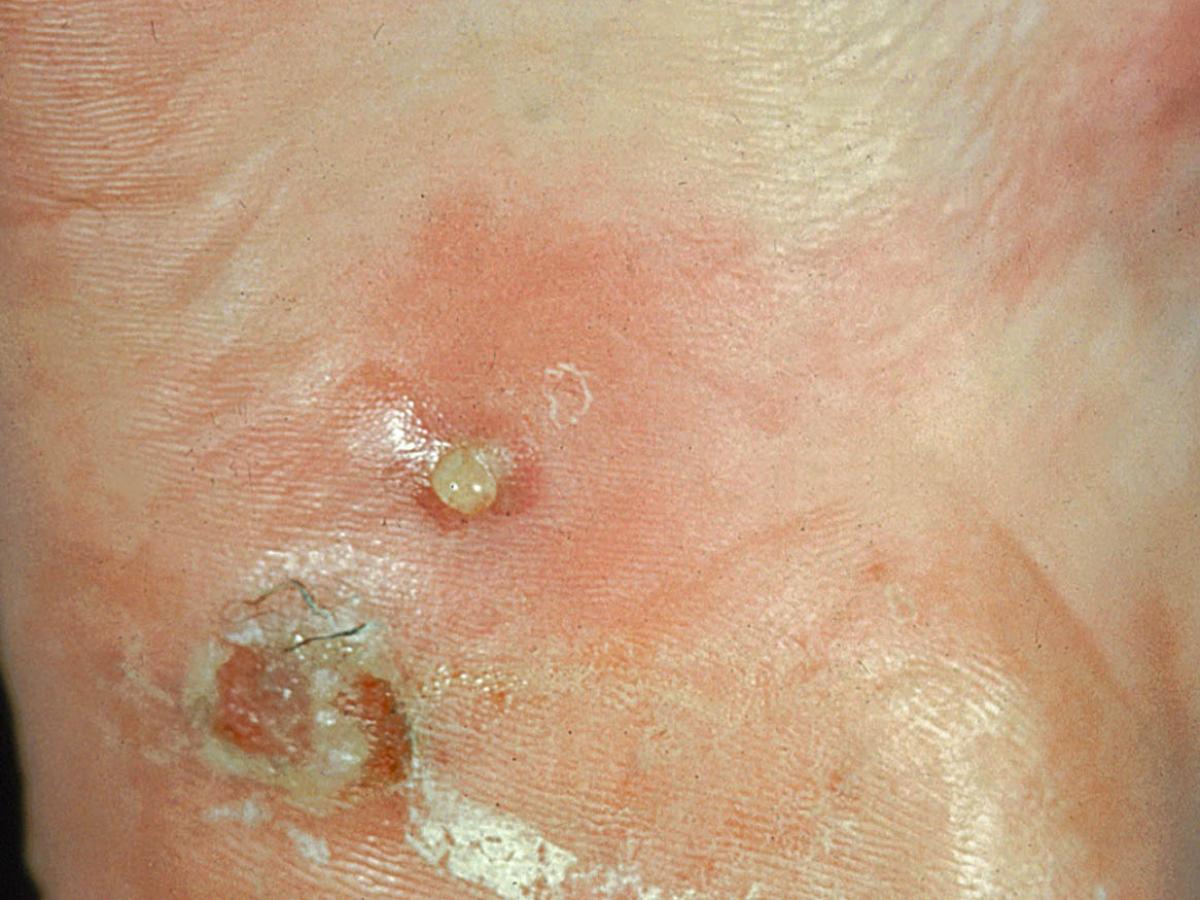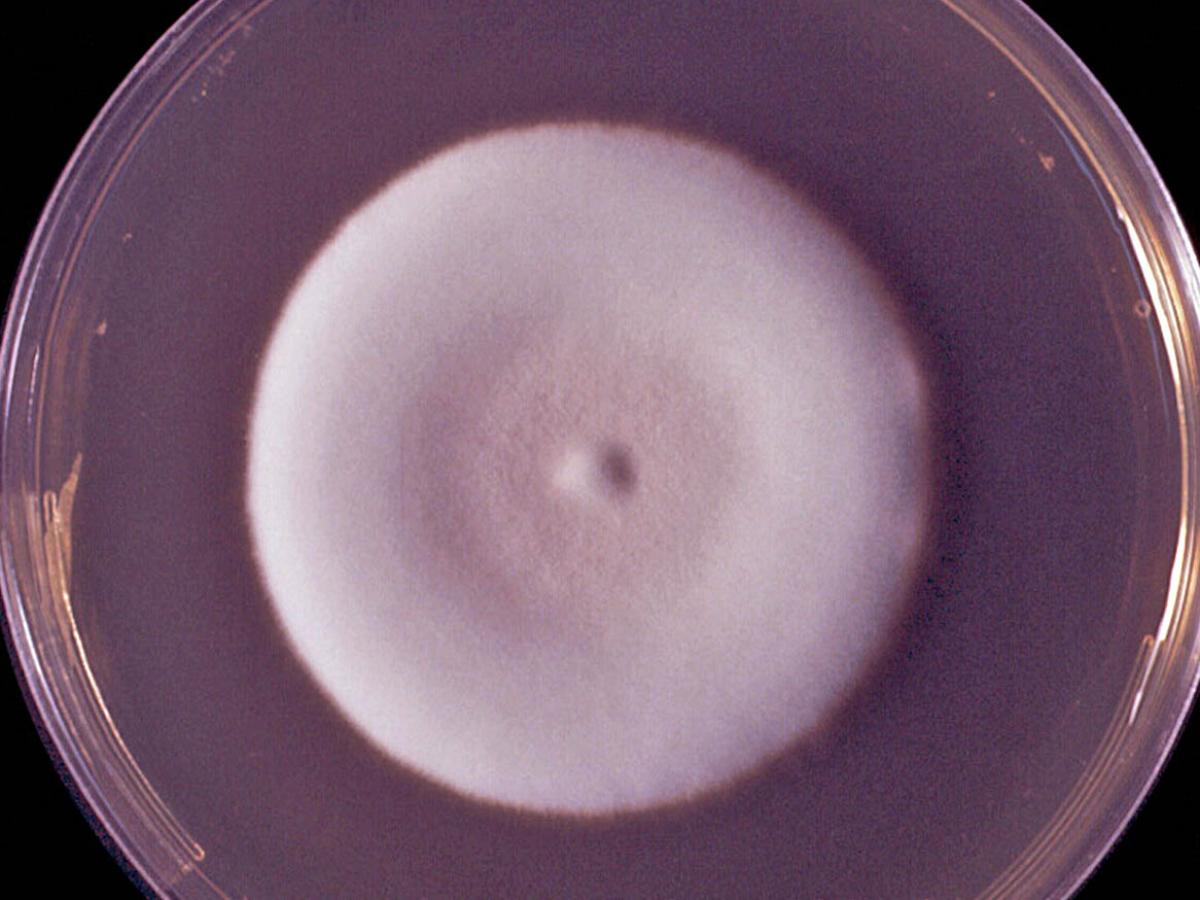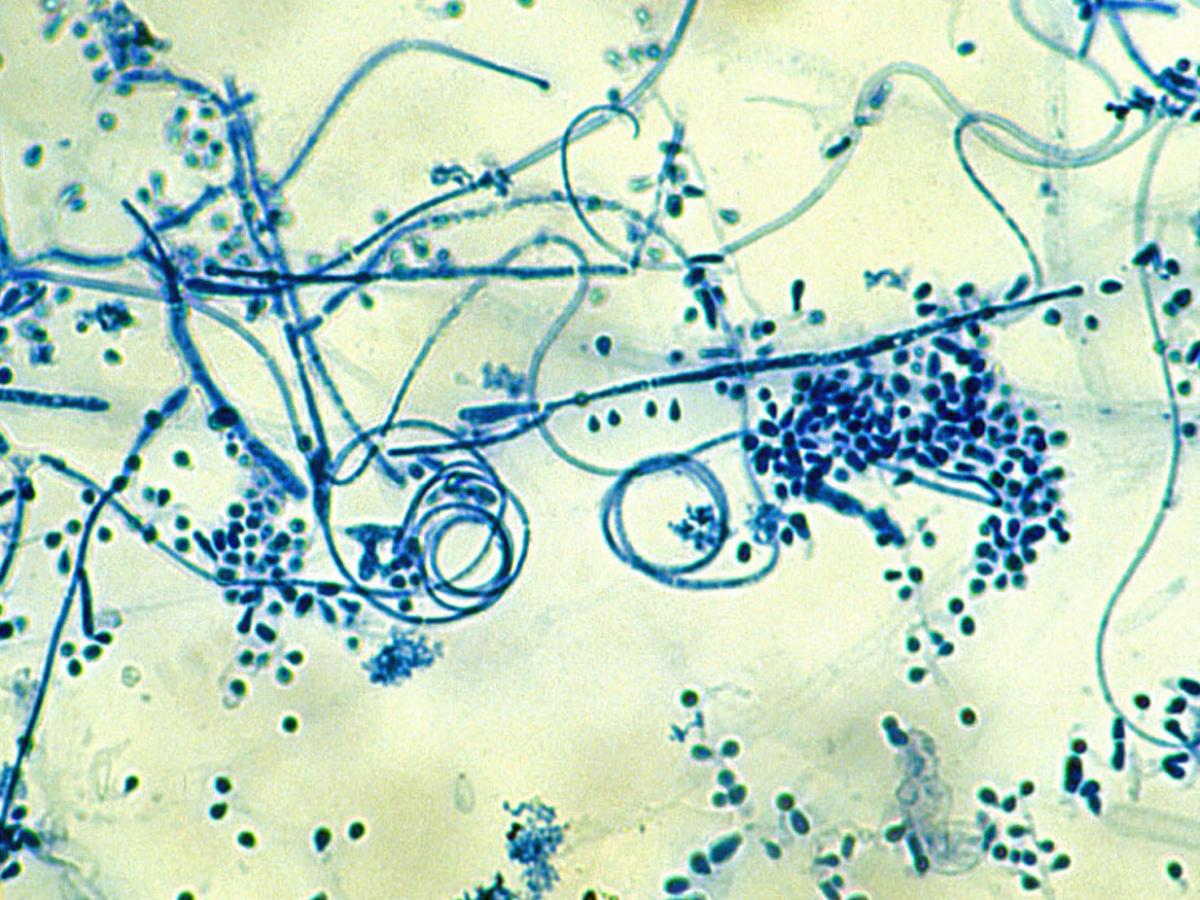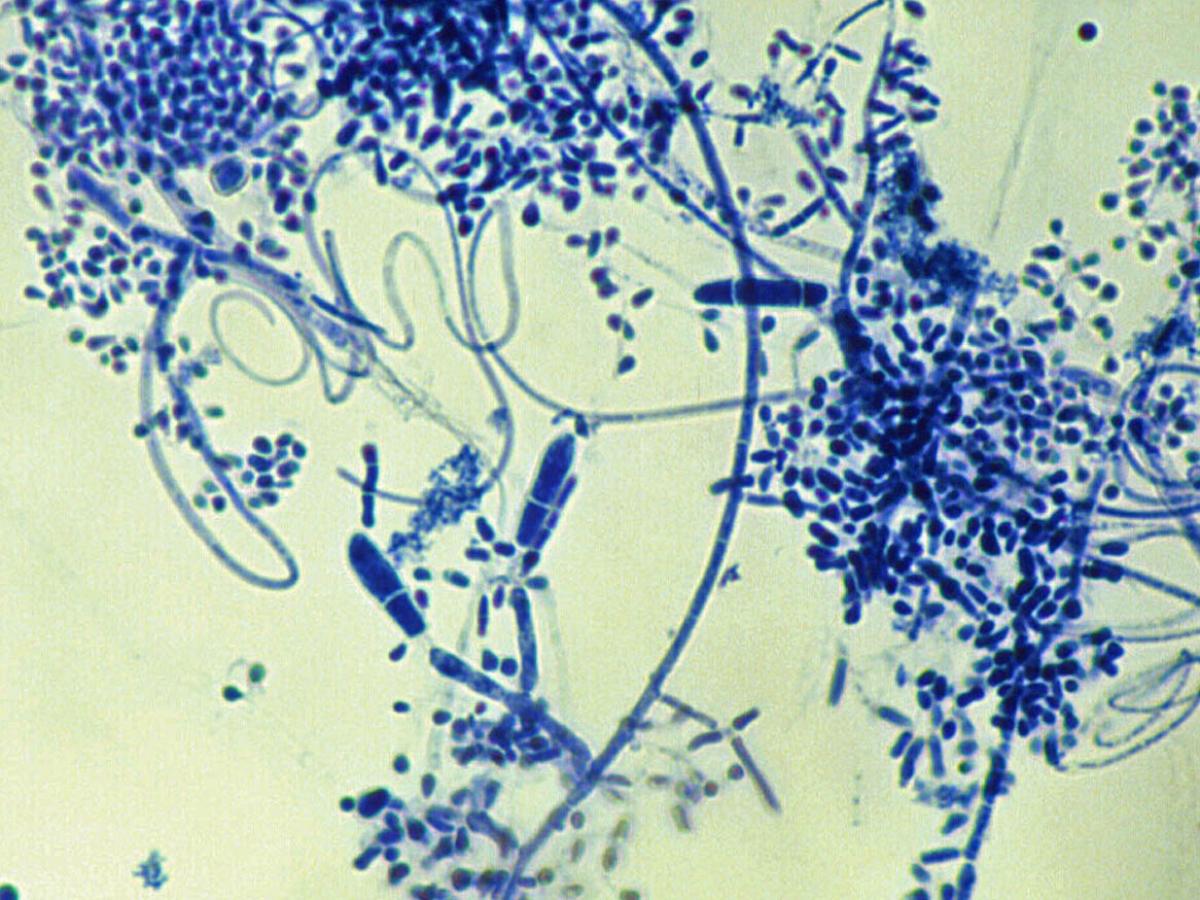Status message
Correct! Excellent, you have really done well. Please find additional information below.
Unknown 80 = Trichophyton interdigitale
Clinical presentation: Colonies are fast growing, suede-like to downy, with a strong yellow to orange-brown diffusable pigmentation. When sporulating numerous black sporodochia (aggregates of conidiophores) are visible.
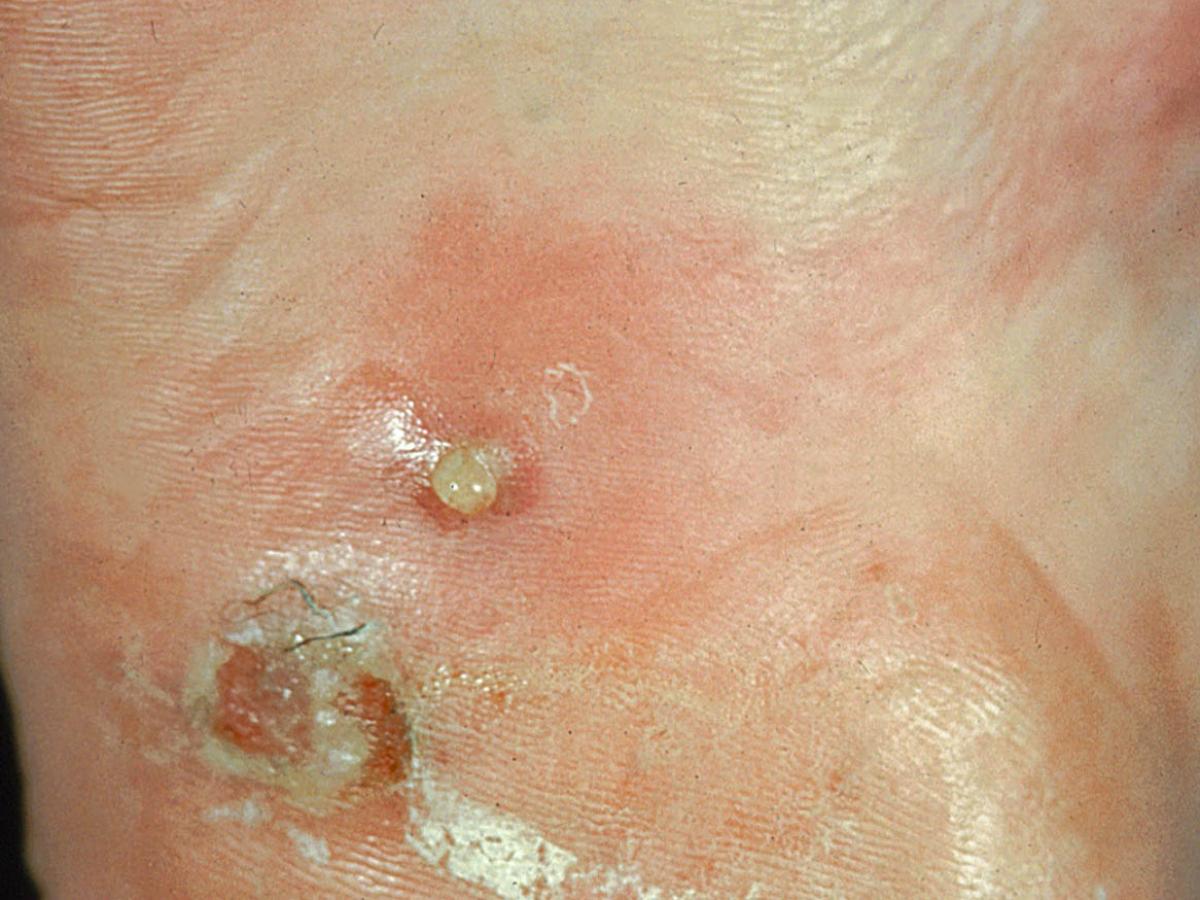
Culture: Colonies are usually flat, white to cream in colour with a powdery to suede-like surface and yellowish and pinkish brown reverse pigment, often becoming a darker red-brown with age.
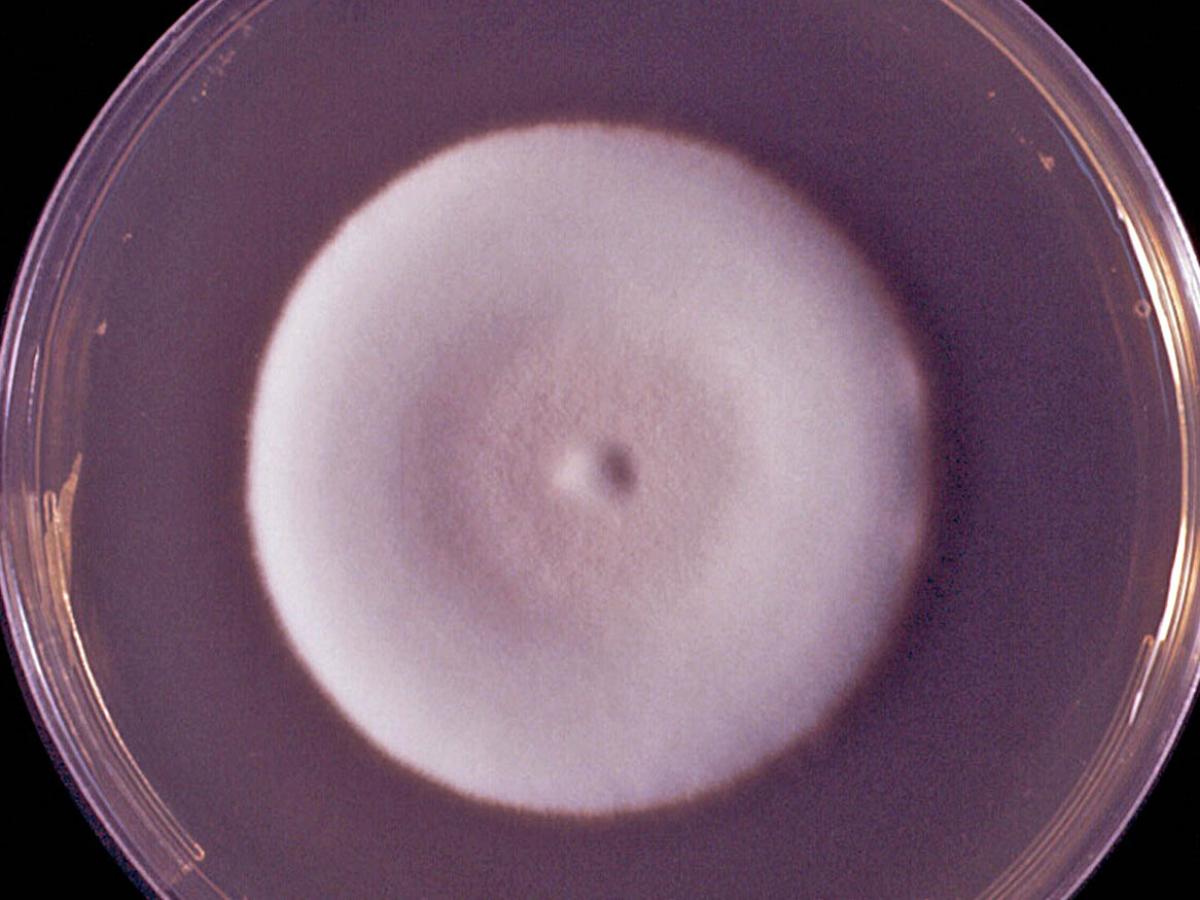
Microscopy: Numerous subspherical to pyriform microconidia, occasional spiral hyphae and spherical chlamydospores are present, the latter being more abundant in older cultures. Occasional slender, clavate, smooth-walled, multiseptate macroconidia are also present in some cultures. RG-2 organism.
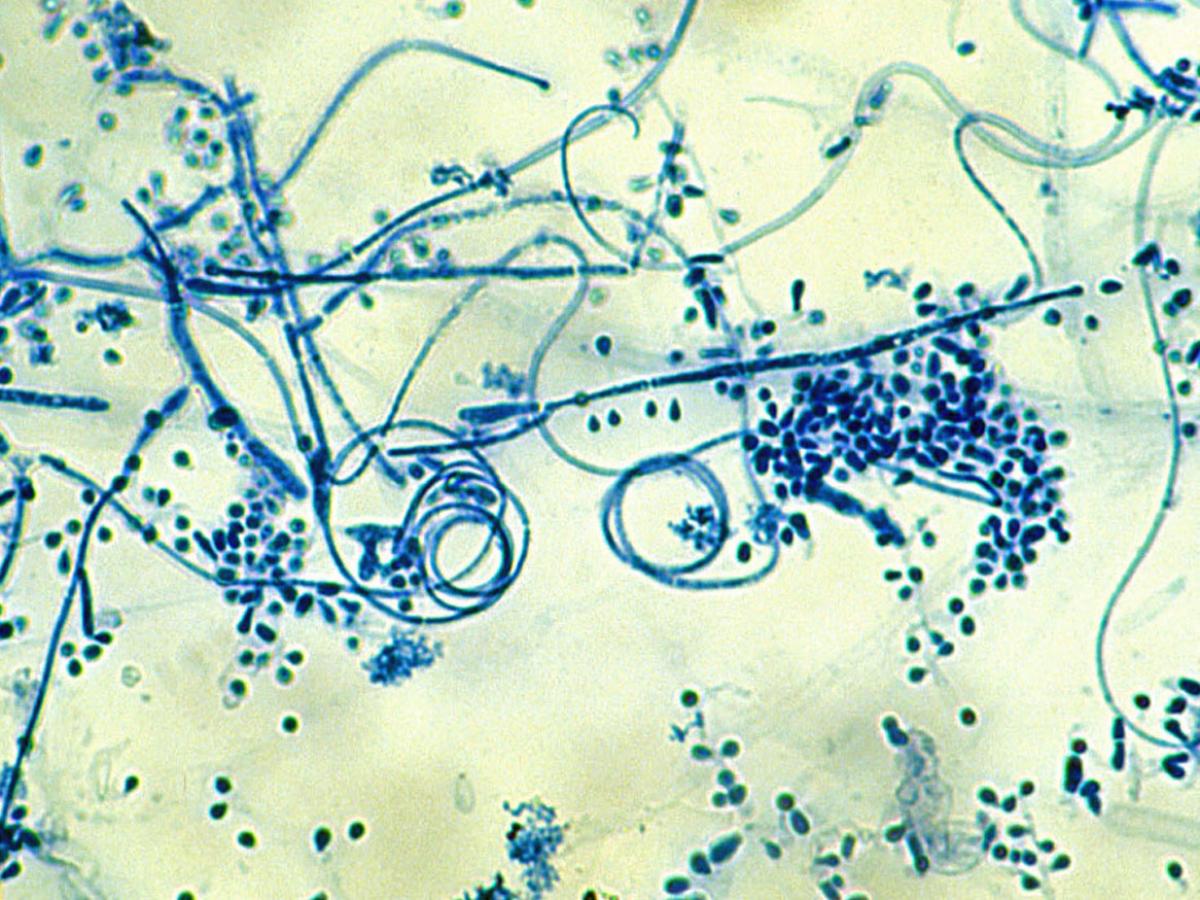
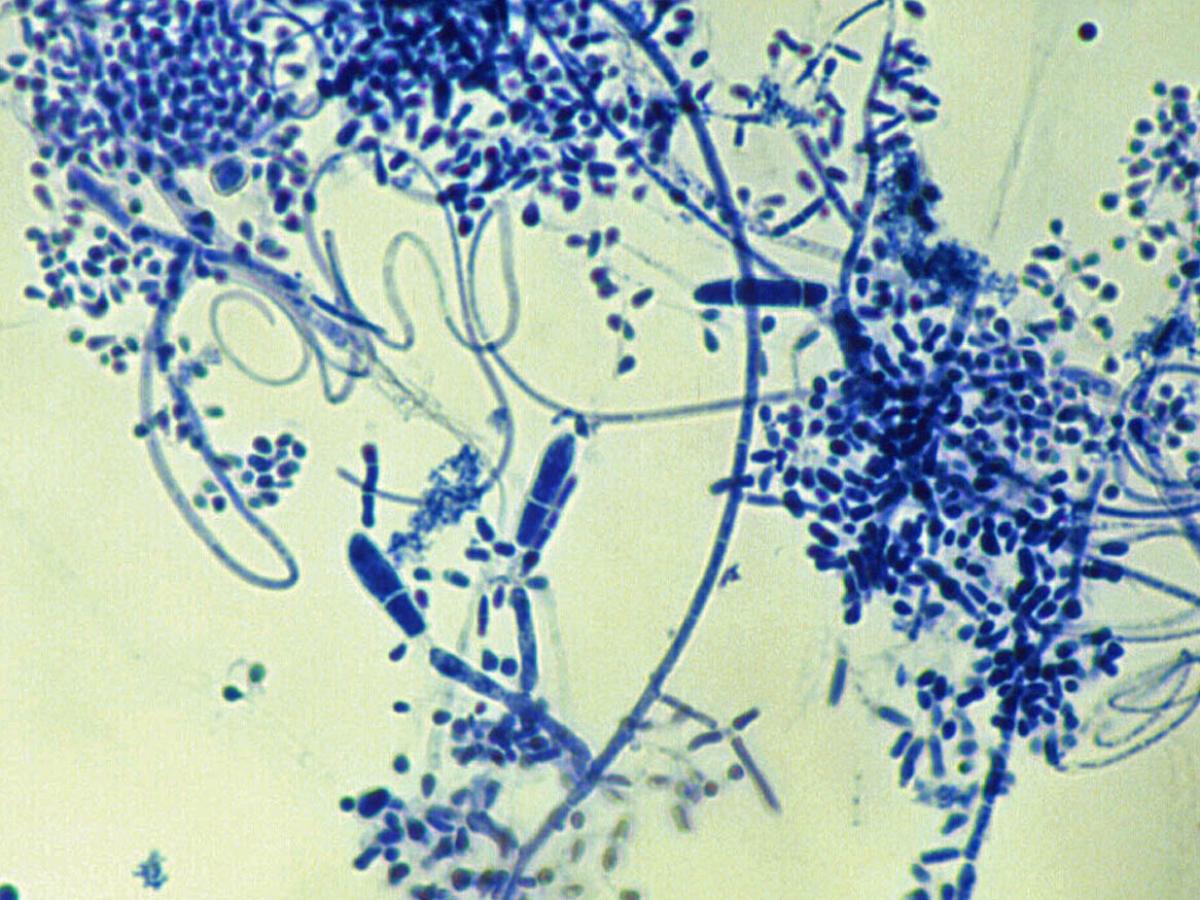
Comment: Trichophyton interdigitale is an anthropophilic fungus which is a common cause of tinea pedis, particularly the vesicular type, tinea corporis, and sometimes superficial nail plate invasion. It is not known to invade hair in vivo but produces hair perforations in vitro. Distribution is world-wide.
About Trichophyton interdigitale Back to virtual assessment
